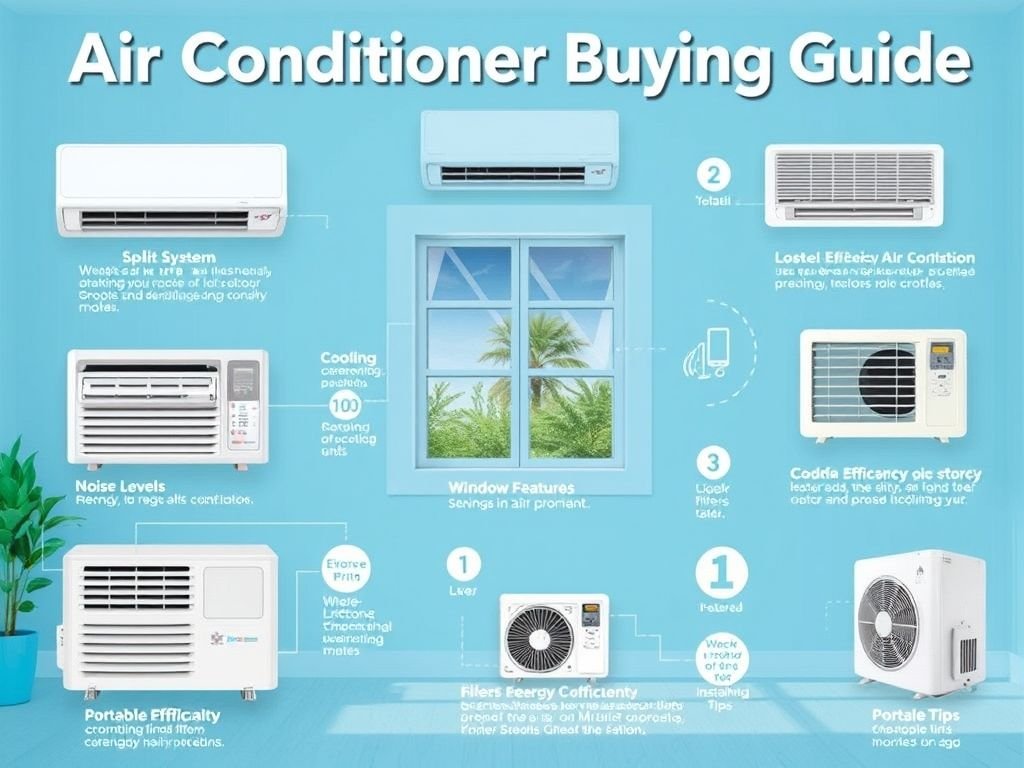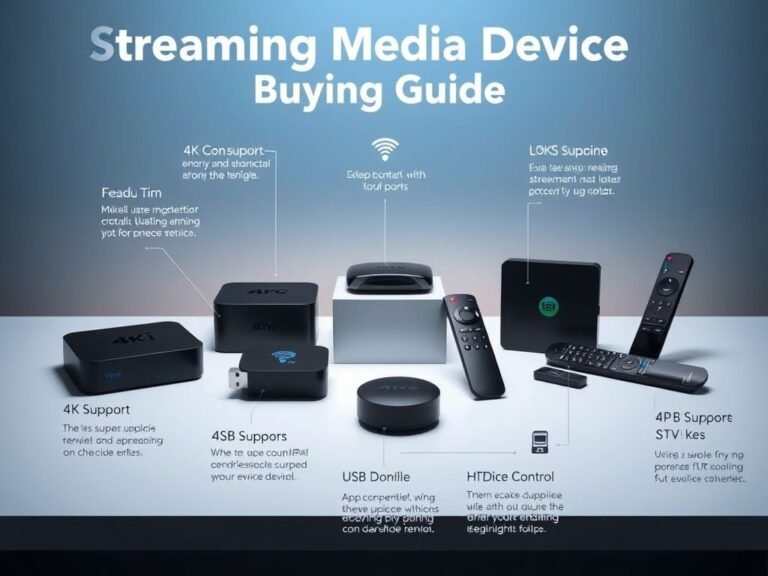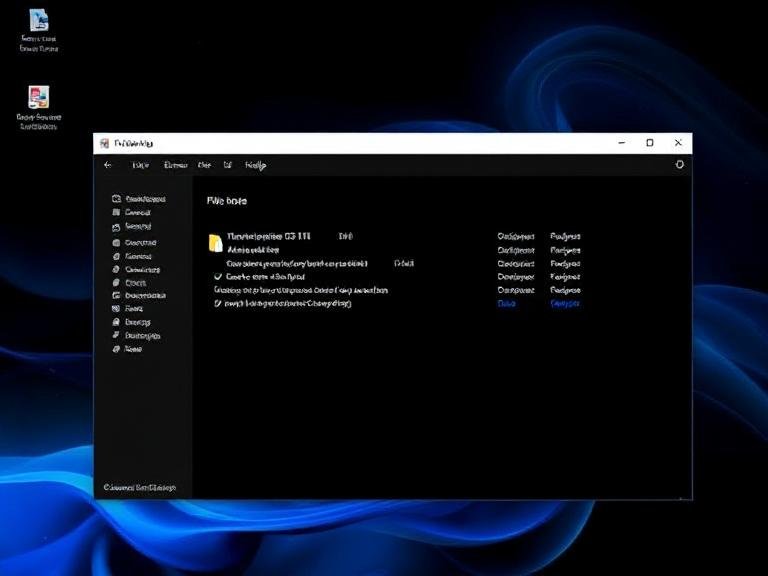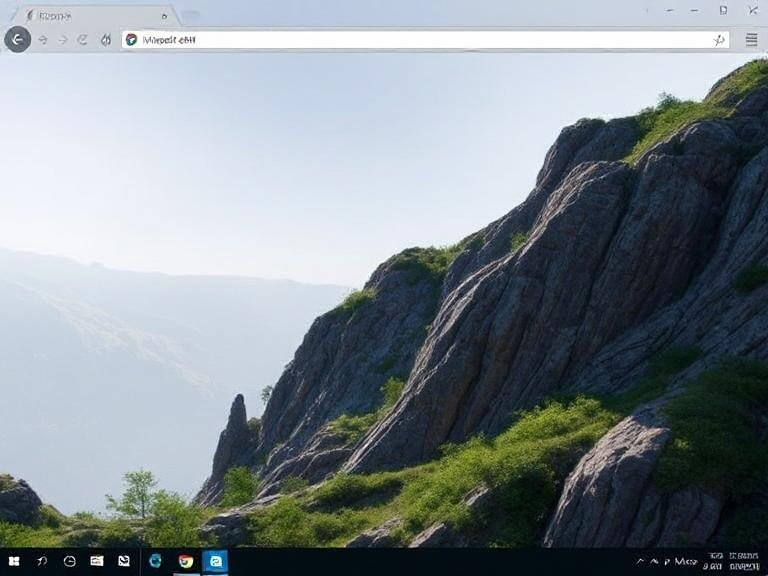
How to Choose the Right Air Conditioner for Your Home (2025 Guide)
When summer heat rolls in, comfort becomes a necessity — not a luxury. If your home doesn’t have central air conditioning, a window or portable unit can be a lifeline. But picking the wrong one can leave you either sweltering or overspending on electricity.
The key isn’t buying the most powerful or expensive model — it’s choosing the right size, the best type, and a unit that runs efficiently without turning your electric bill into a shock every month.
According to Energy Star, cooling accounts for about 13% of the average household’s annual energy bill. That makes energy efficiency more important than ever — especially as temperatures and electricity rates keep rising.
This guide will help you find an air conditioner that actually works for your space, your budget, and your lifestyle — with tips on sizing, features, installation, and long-term savings.
Window vs. Portable vs. Ductless: What’s Best for You?
Not all air conditioners are created equal. The best choice depends on your home, how you live, and what kind of cooling you need.
Window Air Conditioners
These are the go-to for most renters and homeowners looking to cool a single room. They install in a window (or a wall sleeve), vent heat outside, and offer strong, reliable cooling.
- Pros: Affordable, energy-efficient, quiet (especially newer models), and widely available.
- Cons: Can block part of your view, require secure installation, and may not be allowed in some apartments.
Best for: Bedrooms, living rooms, or home offices up to 550 sq ft.
Portable Air Conditioners
These standalone units roll on wheels and use a hose to vent hot air through a window.
- Pros: No permanent installation, easy to move between rooms.
- Cons: Less efficient, noisier, heavier (50–80 lbs), and often overpriced for what they deliver.
Best for: Renters or temporary setups — but only if window units aren’t an option.
Ductless Mini-Split Systems
These consist of an indoor wall-mounted unit and an outdoor compressor, connected by refrigerant lines.
- Pros: Very quiet, highly efficient, zoned cooling (cool only the rooms you use), and no duct loss.
- Cons: High upfront cost and requires professional installation.
Best for: Homes without ductwork, room additions, or long-term cooling solutions.
How Big Should Your AC Be? (It’s Not Just About Square Feet)
Choosing the right size is the most important — and most overlooked — step.
Air conditioners are rated in BTUs (British Thermal Units). Too small, and it’ll run nonstop without cooling the room. Too big, and it’ll cool too fast, cycle on and off constantly, and fail to remove humidity — leaving the air cold but clammy.
Here’s a general guide:
- 100–250 sq ft → 5,000–6,500 BTU (small bedroom or office)
- 250–350 sq ft → 7,000–8,500 BTU (larger bedroom)
- 350–550 sq ft → 9,800–12,500 BTU (living room or open space)
But don’t stop there. Adjust based on:
- Sun exposure: Add 10% if the room gets full sun; subtract 10% if it’s heavily shaded.
- Occupancy: Add 600 BTUs for each extra person beyond two.
- Kitchen use: Add 4,000 BTUs — cooking generates a lot of heat.
- Ceiling height & insulation: High ceilings or poor insulation mean you may need more cooling power.
A well-sized unit runs steadily, removes moisture, and keeps the room comfortably cool — not icy.
Energy Efficiency: Save Money While You Cool
Look for the Energy Efficiency Ratio (EER) — it measures how much cooling you get per watt of electricity. The higher the EER, the more efficient the unit.
- EER of 10 or higher is good.
- ENERGY STAR® certified models meet strict standards and are at least 10% more efficient than non-certified units.
- Some top models earn the ENERGY STAR Most Efficient label — these offer the best long-term savings.
Efficiency isn’t just about the rating. Features like better insulation, tight-sealing installation kits, and inverter compressors also help reduce energy waste.
New Designs That Make a Real Difference
U-Shaped & Inverted U-Shaped Units
These newer window designs are gaining popularity for good reason:
- U-shaped: Lets the window slide into the unit, improving insulation and reducing outside noise.
- Inverted U-shaped: Sits over the sill and blocks less light — perfect for rooms where natural daylight matters.
They’re usually more expensive and trickier to install, but many now come with adapter kits for older or nonstandard windows.
Inverter Technology
Instead of turning on and off in bursts, inverter compressors adjust speed to maintain a steady temperature.
Benefits:
- Uses less energy
- Runs quieter (great for bedrooms)
- Cools more evenly without temperature swings
Once limited to premium models, inverter tech is now common in midrange units — and worth considering for long-term comfort and savings.
Smart Features: Useful or Just Hype?
Many 2024–2025 models come with smart features that go beyond basic remote control.
- Wi-Fi & App Control: Adjust settings from your phone, even when you’re away.
- Geofencing: Turns the AC on automatically as you head home.
- Voice Control: Works with Alexa, Google Assistant, or Apple Home.
- Scheduling & Energy Tracking: Set cooling times and monitor usage to cut costs.
These features add convenience — and can save energy — but they also increase the price. Decide if you’ll actually use them before paying extra.
Noise Level: Why It Matters
A loud AC can be more than annoying — it can disrupt sleep, work, or relaxation.
The quietest models (especially inverter and U-shaped types) run at noise levels close to a low-speed fan. Others can sound like a small vacuum — especially on high.
If you’re cooling a bedroom or home office, prioritize low noise ratings. Look for models tested and praised for quiet operation.
Installation & Maintenance: Small Steps, Big Impact
Even the best AC won’t work well if it’s not installed or maintained properly.
Installation Tips
- Make sure the unit is level — it needs a slight tilt outward to drain condensation.
- Seal all gaps with foam, brackets, or weather stripping to prevent hot air from sneaking in.
- For casement or sliding windows, check if the model fits — or consider a through-the-wall sleeve.
- Renters: Always check with your landlord before installing.
Maintenance Tips
- Clean the filter weekly during heavy use. A clogged filter reduces airflow and efficiency.
- Choose a model with an easy-to-reach filter — if it’s hard to clean, you probably won’t.
- Wipe down vents and gently vacuum condenser coils monthly, especially if you live in a dusty or smoky area.
- Remove and store the unit in winter (unless it’s designed for year-round use).
How Are ACs Tested? (Spoiler: It’s Not Just About Cooling)
In independent testing labs, air conditioners are evaluated under real-world conditions:
- Cooling speed: How fast it drops the temperature in a 90°F room.
- Temperature hold: How well it maintains the set temperature.
- Noise level: Measured on both low and high settings.
- Energy use: Tracked to verify efficiency claims.
Reliability and owner satisfaction ratings come from thousands of real-world user reports — helping predict how long a model might last and how happy owners are.
Newer inverter and U-shaped models are still being evaluated for long-term performance, but early data shows promise for durability and efficiency.
Which Brands Offer the Best Value?
Several brands dominate the window AC market, each with its own strengths:
- Friedrich: Premium build, high BTU options, and excellent durability — but pricier.
- Frigidaire & GE: Widely available, reliable, and cover a broad range of sizes and prices.
- LG & Haier: Solid mid-range options with modern features and good efficiency.
- Midea: Known for innovative designs, including U-shaped and inverter models.
- Kenmore: Made by LG, sold through Sears and Amazon — dependable and well-priced.
Other brands like Toshiba, Whirlpool, Emerson, and TCL also offer competitive models worth considering.
But remember: performance varies even within the same brand. Always check independent ratings before buying.
Final Tips Before You Buy
- Match BTUs to your room — not your hopes. Bigger isn’t better.
- Prioritize efficiency. A slightly more expensive, efficient model pays for itself over time.
- Think long-term. Inverter and U-shaped units cost more upfront but save money and noise over the years.
- Avoid portable ACs unless you have to. They’re less efficient, noisier, and harder to set up.
- Check return policies — especially if buying online.
- The best AC isn’t the strongest — it’s the one that fits your space.
- Efficiency = lower bills. Look for ENERGY STAR and high EER.
- Inverter and U-shaped models are worth the upgrade for comfort and quiet.
- Maintenance matters — a clean filter keeps your AC running like new.
With the right air conditioner, you can stay cool, save energy, and enjoy summer without sweating — or overspending.





